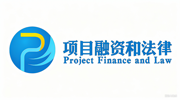US, Vietnam pledge to boost ties as Blinken visits Hanoi
HANOI (AP) — Fifty years after the last U.S. combat troops left South Vietnam, Secretary of State Antony Blinken looked Saturday to strengthen America’s ties with its old foes in Hanoi as it seeks to counter China’s growing assertiveness in the Indo-Pacific.
Blinken and Vietnamese Prime Minister Pham Minh Chinh pledged to boost relations to new levels as they met just two weeks after the 50th anniversary of the U.S. troop withdrawal that marked the end of America’s direct military involvement in Vietnam.
And it came as Blinken broke ground on a sprawling new $1.2 billion U.S. embassy compound in the Vietnamese capital, a project the Biden administration hopes will demonstrate its commitment to further improving ties less than 30 years after diplomatic relations were restored in 1995.
Despite concerns over Vietnam’s human rights record, Washington sees Hanoi as a key component of its strategy for the region and has sought to leverage Vietnam’s traditional rivalry with its much larger neighbor China to expand U.S. influence in the region.
“We now hope to be able to take (relations) to an even higher level,” Blinken said.
“This has been a very comprehensive and effective relationship and going forward we will continue to deepen relations,” Chinh said. “We highly appreciate the role and responsibility of the U.S. towards the Asia Pacific, or, in a larger scheme, the Indo-Pacific.”
He added that Vietnam’s communist government is keen to “further elevate our bilateral ties to a new height.”
Along with a number of China’s smaller neighbors, Vietnam has maritime and territorial disputes with the Chinese in the South China Sea. The U.S. has responded by offering diplomatic support and bolstering military cooperation with the Philippines and the island of Taiwan, which China claims as a renegade province.
Just last month, China threatened “serious consequences” after the U.S. Navy sailed a destroyer around the disputed Paracel Islands in the South China Sea for the second day in a row, in a move Beijing claimed was a violation of its sovereignty and security. The Paracels are occupied by China but also claimed by Taiwan and Vietnam.
U.S. officials are reluctant to describe any visit to Asia in terms of China, preferring instead to discuss the importance of improving bilateral ties. But they frequently speak to broader concerns in the region that are clearly directed at China.
“Washington and Hanoi are almost completely aligned on the kind of Indo-Pacific that we want to see and in which we want to reside: a region that’s free and open, where all countries large and small play by the same rules, where large countries don’t bully small ones, where countries trade freely but also fairly, and where disputes are resolved peacefully and in accordance with international law,” said Dan Kritenbrink, a former U.S. ambassador to Vietnam who is currently the State Department’s top diplomat for East Asia.
And five decades after the Nixon administration pulled U.S. combat forces out of Vietnam on March 29, 1973, Washington is pressing ahead with a push to increase its military relationship with the Vietnamese.
Blinken’s visit comes as the administration grapples with its own record of troop withdrawals and is facing congressional criticism and demands to explain the chaotic U.S. departure from Afghanistan two years ago.
Some have likened it to the Vietnam experience, especially as it relates to the fate of Afghans who supported the 20-year military mission but were left behind when the Biden administration pulled out of Afghanistan in 2021.






